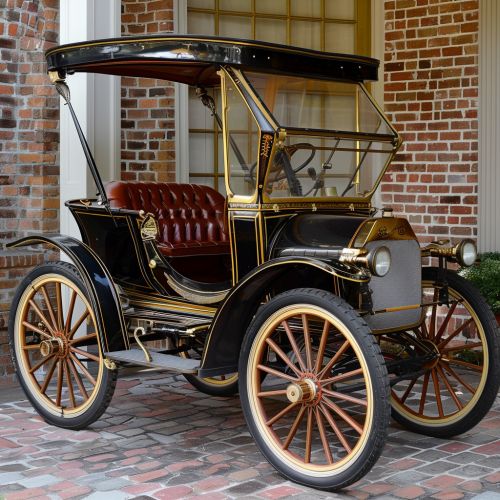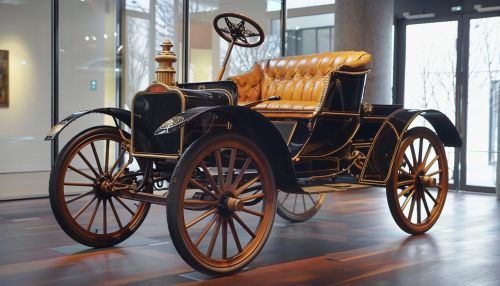Horseless Carriage
Introduction
The term "horseless carriage" refers to the early motor vehicles that emerged in the late 19th and early 20th centuries, marking a significant transition from horse-drawn carriages to mechanized transportation. These vehicles were precursors to modern automobiles and played a crucial role in the development of the automotive industry. This article delves into the history, technological advancements, societal impacts, and key figures associated with the horseless carriage.
Historical Context
Early Innovations
The concept of a self-propelled vehicle dates back to the 18th century, with early inventors such as Nicolas-Joseph Cugnot creating steam-powered vehicles. Cugnot's 1769 steam wagon, designed for the French military, is often considered the first true horseless carriage. However, it was not until the late 19th century that significant advancements in internal combustion engines and electric motors made practical horseless carriages feasible.
Transition from Horse-Drawn Carriages
The shift from horse-drawn carriages to horseless carriages was driven by several factors, including the desire for faster, more reliable transportation and the limitations of animal power. Urbanization and industrialization created a demand for more efficient means of transport, leading to innovations in vehicle design and propulsion systems.
Technological Advancements
Internal Combustion Engines
The development of the internal combustion engine was a pivotal moment in the history of the horseless carriage. Pioneers such as Karl Benz and Gottlieb Daimler made significant contributions to engine technology. Benz's 1885 Motorwagen, powered by a single-cylinder four-stroke engine, is widely regarded as the first practical automobile.
Electric Vehicles
In addition to internal combustion engines, early horseless carriages also explored electric propulsion. Inventors like Thomas Parker and William Morrison developed electric vehicles that offered a quieter and cleaner alternative to gasoline-powered cars. However, limitations in battery technology and the advent of mass-produced gasoline engines eventually led to the decline of early electric vehicles.
Steam-Powered Vehicles
Steam power continued to play a role in the development of horseless carriages. Innovators such as Ransom E. Olds and Stanley brothers produced steam-powered cars that were popular in the late 19th and early 20th centuries. Despite their initial success, steam vehicles faced challenges related to boiler safety and lengthy start-up times.
Societal Impacts
Urbanization and Infrastructure
The advent of horseless carriages had profound effects on urbanization and infrastructure development. Cities began to adapt to the new mode of transportation by paving roads, constructing bridges, and implementing traffic regulations. The increased mobility provided by horseless carriages also facilitated suburban expansion and the growth of commuter culture.
Economic Implications
The rise of the horseless carriage spurred economic growth by creating new industries and job opportunities. The automotive industry emerged as a major economic force, with companies like Ford, General Motors, and Chrysler leading the way. The production and maintenance of horseless carriages also stimulated related industries, including oil, rubber, and steel.
Environmental Considerations
While horseless carriages offered numerous benefits, they also introduced environmental challenges. The widespread use of gasoline-powered vehicles contributed to air pollution and the depletion of natural resources. Early concerns about the environmental impact of horseless carriages laid the groundwork for future advancements in sustainable transportation.
Key Figures and Innovations
Karl Benz
Karl Benz is often credited with creating the first practical automobile. His 1885 Motorwagen featured a single-cylinder four-stroke engine and innovative design elements such as a differential gear and electric ignition. Benz's contributions to automotive engineering set the stage for the mass production of horseless carriages.
Henry Ford
Henry Ford revolutionized the automotive industry with the introduction of the Model T and the implementation of assembly line production techniques. Ford's innovations made horseless carriages more affordable and accessible to the general public, transforming personal transportation and shaping modern society.
Bertha Benz
Bertha Benz, the wife of Karl Benz, played a crucial role in the early success of the horseless carriage. In 1888, she undertook the first long-distance automobile journey, driving from Mannheim to Pforzheim in her husband's Motorwagen. Her journey demonstrated the practicality and reliability of the horseless carriage, garnering public attention and support.


Legacy and Evolution
Transition to Modern Automobiles
The horseless carriage laid the foundation for the development of modern automobiles. Innovations in engine technology, vehicle design, and manufacturing processes evolved over time, leading to the sophisticated and diverse range of vehicles available today. The principles established during the era of the horseless carriage continue to influence contemporary automotive engineering.
Preservation and Restoration
Many early horseless carriages have been preserved and restored by museums, collectors, and enthusiasts. Organizations such as the Antique Automobile Club of America and the Veteran Car Club of Great Britain work to maintain the legacy of these pioneering vehicles. Restored horseless carriages are often showcased at car shows and historical events, providing a glimpse into the early days of automotive history.
See Also
- Internal Combustion Engine
- Electric Vehicle
- Steam Car
- Model T
- Sustainable Transportation
- Antique Automobile Club of America
- Veteran Car Club of Great Britain
